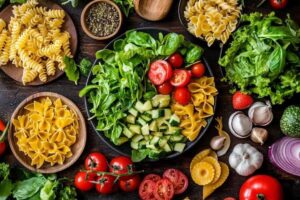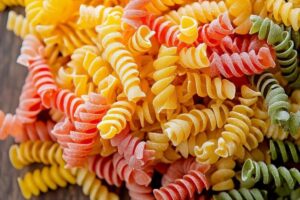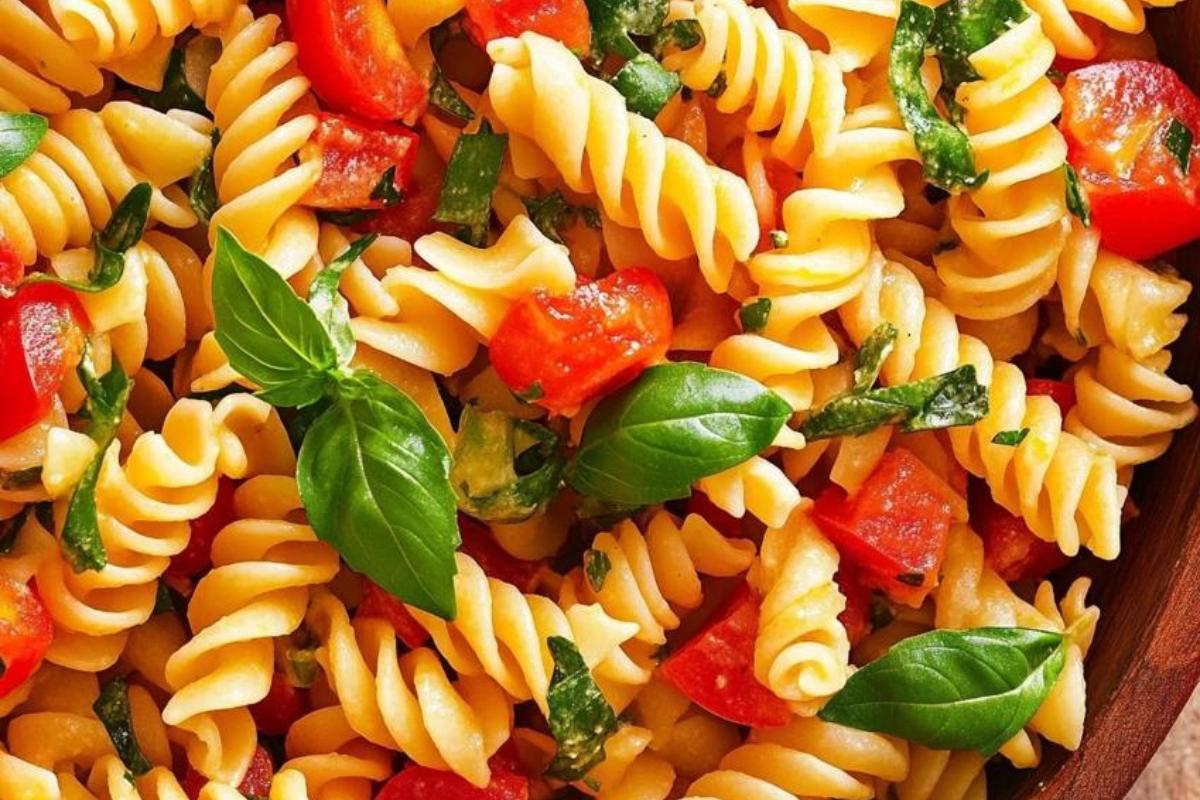Pasta salad is a summer staple, popular for picnics, potlucks, and casual family meals. However, even the simplest dishes can go wrong if you aren’t careful. A good pasta salad strikes the perfect balance between texture, flavor, and freshness. Yet, many people unknowingly make common mistakes that can turn this dish from delightful to disappointing. Below are the five biggest mistakes to avoid when making pasta salad, and how to ensure your pasta salad is the star of any meal.
1. Overcooking or Undercooking the Pasta
One of the most crucial elements of making pasta salad is ensuring that the pasta is cooked to the right texture. If the pasta is overcooked, it will become mushy, while undercooked pasta will be tough and chewy, both of which can ruin the overall texture of the salad.
- Overcooked pasta results in a soggy texture, where the pasta absorbs too much moisture and becomes mushy.
- Undercooked pasta, on the other hand, doesn’t soak up enough dressing, leaving you with hard, flavorless bites.
For an ideal pasta salad, you need to cook the pasta to al dente—which means “to the tooth” in Italian. This texture allows the pasta to hold its shape and absorb the dressing properly while maintaining a pleasant bite. According to Serious Eats’ pasta tips, the best way to avoid overcooking or undercooking is to carefully follow the cooking time on the pasta package and taste the pasta as it cooks.
To ensure your pasta has the right texture, rinse the pasta immediately in cold water after draining it. This will stop the cooking process and prevent the pasta from continuing to soften while it cools down. The key to a good pasta salad is striking the perfect balance between tender and firm, something that Kitchn emphasizes in its common pasta salad mistakes article.
Tips for Cooking Pasta Perfectly:
- Boil the pasta until al dente (check package instructions).
- Rinse the pasta in cold water immediately after draining to stop the cooking.
- Don’t overcook by more than a minute, especially for cold pasta salads where texture matters more.
2. Using the Wrong Pasta Shape

Many people don’t realize how much the shape of the pasta impacts the final texture and ability to absorb dressing. Some shapes simply aren’t well-suited for pasta salads, and using the wrong shape can affect the way the salad looks, feels, and tastes.
For example, long and thin pasta, such as spaghetti or fettuccine, doesn’t mix well with the other ingredients and tends to clump together. Similarly, tube-shaped pasta like rigatoni may trap dressing inside, leaving the rest of the pasta dry. A good pasta salad needs a shape that:
- Holds onto the dressing (think textured pasta shapes).
- Mixes well with vegetables and other salad ingredients.
The best shapes for pasta salads include short, textured options like:
- Fusilli
- Rotini
- Cavatappi
- Orzo
These shapes have ridges or curls that help them hold onto the dressing and mix evenly with the other ingredients. As Tasting Table points out, short pasta that holds onto dressing will ensure that every bite is flavorful.
Choosing the Right Pasta Shape:
- Opt for short, ridged pasta like fusilli or rotini.
- Avoid spaghetti or rigatoni, which can either clump or trap dressing.
3. Not Seasoning the Pasta Properly
Another common mistake is under-seasoning the pasta. Some people assume the pasta will absorb enough flavor from the dressing, but that’s not always the case. Without proper seasoning, your pasta salad can end up tasting bland.
Seasoning starts with salting your pasta water. The pasta itself doesn’t have much flavor, so salting the water gives it a chance to absorb some seasoning while it cooks. Think of it as your first layer of flavor. The water should be salted generously—as salty as seawater is the rule of thumb. According to Kitchn, under-salting the pasta is a surefire way to create a bland dish.
Once the pasta is cooked and drained, toss it with a small amount of olive oil or vinaigrette dressing while it’s still warm. This helps the pasta absorb even more flavor as it cools down. Avoid heavy dressings like mayonnaise-based ones right away, as these can overpower the pasta before it cools.
Tips for Proper Seasoning:
- Seasoning your pasta salad properly is key to achieving a well-balanced flavor profile. Here are some essential tips to ensure your pasta salad is seasoned just right:
- Salt the Pasta Water Generously: The first step to a flavorful pasta salad starts with properly salted water. Use enough salt to make the water taste as salty as the sea. This helps the pasta absorb flavor during cooking, ensuring that your salad won’t taste bland. For reference, aim for about 1-2 tablespoons of salt per quart of water
- Season While Warm: After draining the pasta, toss it with a bit of dressing or olive oil while it’s still warm. Warm pasta absorbs flavors more effectively, locking in the taste before it cools down. This also prevents the pasta from sticking together.
- Taste and Adjust Seasoning: Always taste the pasta salad before serving, as flavors can change once the salad has chilled. Add more seasoning, herbs, or even a splash of extra dressing just before serving to freshen it up. Keep in mind that certain ingredients like olives, capers, and feta can contribute saltiness, so balance accordingly.
- Add Fresh Herbs: Incorporating fresh herbs like basil, parsley, or cilantro at the end can brighten the flavors and enhance the overall taste. Herbs also contribute an additional layer of complexity and freshness.
- Don’t Forget the Acids: Acidic components like lemon juice or a light vinegar-based dressing (such as white wine vinegar or balsamic vinegar) can elevate the dish, adding a refreshing tang that balances the richness of the pasta and cheese
4. Adding the Dressing at the Wrong Time
One of the trickiest parts of making pasta salad is knowing when to add the dressing. Many people make the mistake of adding the dressing too early or too late, which can lead to dry or soggy pasta salad.
If you add the dressing while the pasta is still too hot, it can cause the pasta to become mushy and soak up too much dressing, leaving little flavor for later. On the flip side, adding the dressing after the pasta has cooled completely might result in dry pasta that doesn’t absorb the dressing well.
The trick is to add most of the dressing while the pasta is still warm but not hot. This allows the pasta to absorb the dressing while maintaining its texture. Save a small portion of the dressing to refresh the salad just before serving.
For more tips on when to dress pasta salads, Serious Eats suggests adding the final bit of dressing right before serving to ensure your salad stays moist without becoming soggy.
Tips for Adding Dressing:
- Dress the pasta when it’s warm for optimal flavor absorption.
- Keep a small amount of dressing to add just before serving for freshness.
5. Lack of Texture Variety
A great pasta salad isn’t just about the pasta. It’s also about the variety of textures you can create with different ingredients. Many people fall into the trap of only adding soft ingredients, which leads to a bland, monotonous salad. To keep things interesting, aim for a balance of crunchy, soft, and chewy ingredients.
Here are some examples of textures you can add:
- Crunchy vegetables: cucumbers, bell peppers, and carrots provide a refreshing crunch.
- Fresh herbs: parsley, basil, and cilantro add a burst of flavor and a soft texture.
- Cheese: crumbled feta, mozzarella balls, or shaved Parmesan can add creaminess or a bit of a chew.
- Toasted nuts: almonds, pine nuts, or walnuts can add a nutty, crunchy contrast.
For more ideas on balancing textures, you can refer to Tasting Table’s guide, which suggests adding contrasting textures for a well-rounded bite every time.
Texture-Enhancing Ingredients:

- When making a pasta salad, it’s essential to incorporate a variety of textures to keep the dish exciting and satisfying. By mixing crunchy, soft, and chewy elements, you can create a more dynamic eating experience. Here’s a breakdown of ingredients to boost texture in your pasta salad:
- Crunchy Ingredients:
- Cucumbers: Add a refreshing crunch and mild flavor.
- Bell Peppers: Provide a sweet, crisp bite.
- Carrots: A classic crunchy vegetable that also adds color.
- Toasted Nuts: Almonds, pine nuts, or walnuts give a nutty crunch that contrasts with softer ingredients.
- Pickled Vegetables: Pickled onions, olives, or capers introduce crunch along with a tangy flavor
- Soft Ingredients:
- Mozzarella Balls (Bocconcini): Soft, mild, and creamy, they add richness without overpowering other flavors.
- Feta Cheese: Adds creaminess and a slightly salty, tangy bite that complements the vegetables.
- Avocado: Creamy and smooth, balancing out the crunchier ingredients.
- Chewy Ingredients:
- Sun-Dried Tomatoes: Offer a sweet, tangy chewiness that enhances the overall flavor profile.
- Roasted Peppers: Slightly chewy with a smoky flavor.
- Artichoke Hearts: These add a chewy texture while contributing a subtle, savory flavor.
By combining these texture-enhancing ingredients, you can elevate your pasta salad from simple to extraordinary, offering a variety of textures that make every bite more interesting and delicious.
- Crunchy Ingredients:
Frequently Asked Questions (FAQs)
Q1: Can I make pasta salad ahead of time?
Yes! In fact, pasta salad often tastes better when made ahead of time because it allows the flavors to meld together. Just be sure to add a bit of extra dressing right before serving, as the pasta will absorb some of the moisture while it sits.
Q2: What’s the best pasta shape for a pasta salad?
Short, textured pasta like fusilli, rotini, or cavatappi works best because it holds onto the dressing and mixes well with the other ingredients. Avoid long or tubular pasta, as they don’t hold the dressing as well.
Q3: Should I rinse pasta after boiling?
For pasta salad, yes. Rinsing the pasta in cold water stops the cooking process and washes off excess starch that can make the pasta gummy.
Q4: How can I make a healthier pasta salad?
To make a healthier pasta salad, use a light vinaigrette instead of a mayonnaise-based dressing. Incorporate plenty of fresh vegetables and herbs for added flavor without extra calories.
Q5: Can I freeze pasta salad?
Freezing pasta salad isn’t recommended, as freezing changes the texture of both the pasta and vegetables, making them mushy when thawed.
Conclusion: Master Your Pasta Salad
Pasta salad might seem like a simple dish, but to get it right, you need to avoid common mistakes like overcooking the pasta, using the wrong shapes, or adding the dressing at the wrong time. By following these tips, you can make a pasta salad that stands out with perfect texture, flavor, and balance.
Remember, the key to a great pasta salad is seasoning the pasta, choosing the right pasta shape, incorporating a variety of textures, and using dressing wisely. Take the time to chill your pasta salad properly before serving, and don’t be afraid to experiment with different crunchy and soft elements to make your salad pop.

